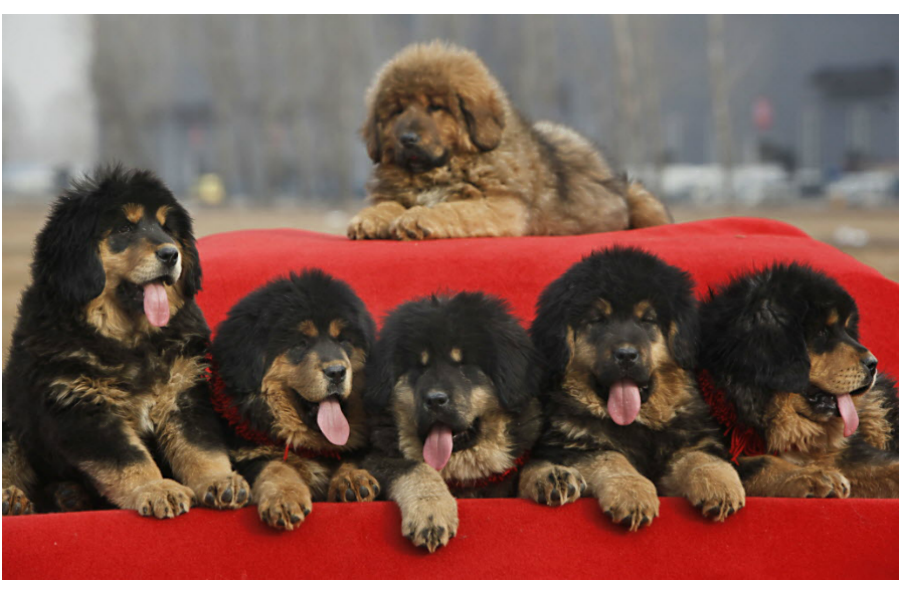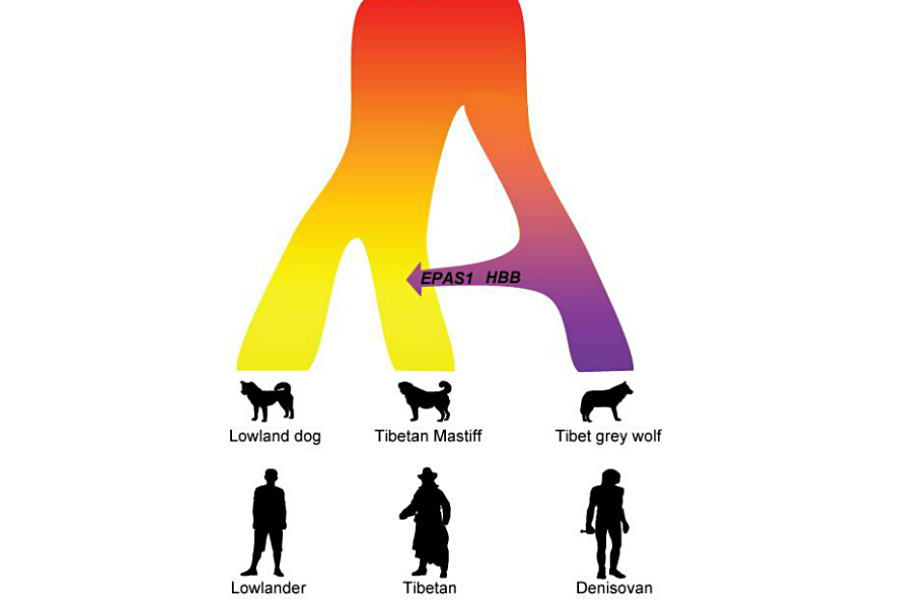Did interbreeding with wolves prepare Tibetan Mastiffs for the high life?
Loading...
Most organisms on Earth would languish if they ventured into the extremely high-altitude and low-oxygen conditions on the Tibetan Plateau. But, alongside humans, one domestic dog breed successfully adapted to that harsh environment that reaches an elevation of over 16,000 feet.
But how did they do it?
Tibetan Mastiffs may have wolves to thank for their high-altitude adaptations. Scientists suggest in a paper published Tuesday in the journal Molecular Biology and Evolution that the dogs interbred with their wild relatives that were already well-adapted to the Tibetan Plateau, capturing some of their genetics in the process.
But this isn't just a dog's tale. This new research suggests the canine's story mirrors how scientists think the people of Tibet adapted to the high-altitude conditions. Previous research suggested the humans got their genetic adaptations by interbreeding with another human species, the now-extinct Denisovans.
And these entangled stories of interspecies hybridization are helping to paint a picture of evolution as a more dynamic process than previously thought.
"Our work shows that as the best friend of humans, dogs and humans even evolved in a similar way," one of the study authors Zhen Wang, a computational biologist at the Shanghai Institutes for Biological Sciences, Chinese Academy of Sciences in Shanghai, writes in an email to The Christian Science Monitor. "Different from many other wild animals living in the plateau, dogs immigrated there with humans and they had a relatively short time for adaptation. Therefore, it may not be surprising that they achieved this by inbreeding with their wild relatives."
When Dr. Wang and colleagues looked at the dogs' and wolves' genetics they identified two regions of the genome associated with altitude adaptations that overlapped in the species: the EPAS1 and the HBB loci. Interestingly, the EPAS1 gene was the same part of the humans' genome that researchers had identified as being important for Tibetans' own high-altitude adaptations.
"What's really fun about this article is that it's demonstrating that what is true for humans in the same area is also true for dogs," Greger Larson, director of the Palaeogenomics & Bio-Archaeology Research Network at the University of Oxford who was not part of the research, says in a phone interview with the Monitor.
This research suggests that hybridization is "actually a really important process for evolution," Adam Boyko, a geneticist at Cornell University whose own research has focused on canines but was not part of this study, tells the Monitor in a phone interview.
The role of hybridization in evolution is tempting to brush off, Dr. Boyko explains. It is seen as rather messy because it blurs the lines between species.
A simpler, more linear view of evolution is based around natural selection of random mutations in the genome. It goes something like this: When an organism moves into a new environment or their environment changes, certain random mutations in their genetics become advantageous that hadn't been before. The individuals with those newly advantageous mutations are more likely to survive and reproduce, thus passing along those traits to the next generation. Over many generations those mutations become well-established in the population and the organism has adapted to the new environment.
But, given that these new traits arise only from random mutations, that is a very slow process. And, as Boyko puts it, "it's not that you always have a mutation waiting in the wings."
For the dogs and humans, there was another way to adapt to living in the high-altitude conditions. "If somebody else has already acquired that ability, why not grab it and then use it?" Dr. Larson says.
And that's just what the dogs (and humans) probably did. This new research suggests "they've acquired this not by a selective pressure that is operating on their own genomic variation, but they've acquired this trait from local wolves in the area, who had probably evolved it themselves." Larson says. "And the dogs just stole it."
This isn't the first time scientists have identified traits transferred between domestic dog and wild wolf populations. When some North American Gray Wolves were spotted with black coats, scientists dug into their genomes and found that they had picked up an associated genetic variation from interbreeding with domestic dogs with black coats.
In that scenario, Boyko says, the larger population size in dogs than in wolves can explain why the black coat came from hybridization rather than natural genetic variation. In a larger population there is more opportunity for genetic mutations, he explains. So the black coat arose in the dogs and then introgressed into the wolves.
But in the case of the Tibetan wolves and Tibetan Mastiffs, population size likely didn't play a role. Instead, because the conditions were so challenging up on the Tibetan Plateau, selection for high-elevation adaptations was particularly strong. In other words, the offspring with those traits would have survived much more readily than those without.
The idea that an organism "can acquire traits from other species rather than invent them on their own adds a completely new and radically more dynamic picture to the way that evolution proceeds," Larson says.
"If we are thinking about how we understand evolution and how we understand life on Earth, this is a brilliant demonstration of how, even on very short time-frames, evolution is far more plastic and far more opportunistic than I think we probably would have given it credit for."









